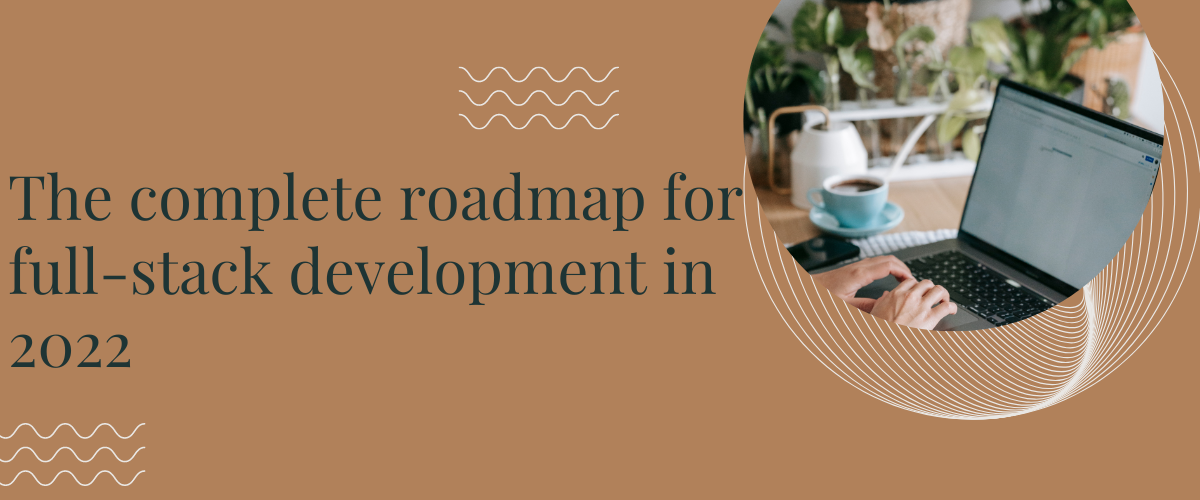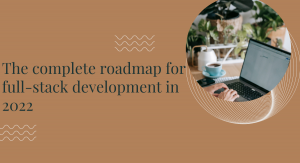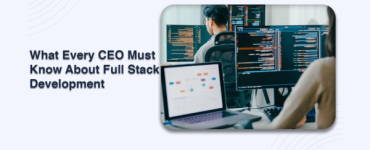
The complete roadmap for full-stack development in 2022
Recent technological advances have increased the need for full-stack developers. Want to be an excellent developer? Opt for full stack development. Web programming is straightforward today, but being a full-stack developer isn’t for everyone.

Full-stack developers know front-end and back-end technologies. Full stack developers are expected to have a wide range of skills, but not to an expert level. Here is a complete roadmap for becoming a full-stack developer.
What Skills are Required to Become a Full Stack Developer?
These are the skills you must acquire if you’re set on pursuing a career in full stack development (Note that you may require more or less than these in order to land your dream job because various people have varied perspectives regarding full stack developers.)
Discover Git and Github.
To be a developer, you must have this. Understanding Git will help you manage your commits and change history as you work on an application. It is useful if you decide to go back to an earlier commit. Github enables you to store files online and supports teamwork or public display of your work.
Learn command line
Any developer would benefit from learning the command line because we use it every time to execute our applications or install any dependencies.
Study coding languages
We also need to be knowledgeable about several programming languages if we want to become full-stack developers. Since we are aiming for web development and these two are the most popular choices in this field, It is advisable to choose Javascript or Python.
After understanding how the languages function in practice, we should always move on to learning frameworks. This will enable us to comprehend things better.
Roadmap for Frontend Developers
The part of a website that users interact with is called the front end, or front end development. Users and the application’s backend interact with one another through the frontend.
Front-end full stack development goes beyond plain Javascript, HTML, and CSS. Many frameworks facilitate our work and aid in the creation of effective front ends for our websites.
We must first concentrate on the fundamentals. Starting with HTML and CSS is necessary. These serve as the foundation.
CSS and HTML
HTML and CSS need to be studied initially. While CSS provides the styles and effects to the web site’s content, HTML aids in its development. You can finish learning HTML in a few days because it is simple to do so. Then, in order to style our web pages, we must understand CSS.
We can utilize any available CSS libraries or develop our own unique CSS. Additionally, CSS features preprocessors like SASS and LESS, which make CSS writing more understandable and programmatic.
You may learn a variety of CSS libraries, although some are more well-known than others. The most widely used option is Bootstrap. It is the most extensively used CSS library and offers a variety of components and styling options, simplifying styling.
Other excellent CSS libraries include:
- Tailwind CSS
- Materialize
- Bulma
- Javascript
We must first study HTML and CSS before moving on to Javascript. While HTML and CSS were able to create static and responsive web pages, Javascript is what gives the website its dynamic behavior. It is the only one on a website that is capable of carrying out all logical functions.
Javascript is available in a variety of flavors. It is best to master Javascript first before moving on to its frameworks because doing so will make it easier for you to comprehend them.
Front-end frameworks
Three front-end frameworks, React, Angular, and Vue, are the most widely used.
Most front-end developers pick up one or more of these skills. If you began with any of these, it would be beneficial. Each of them has advantages and drawbacks of its own.
Roadmap for backend developers
The backend of an application is where all the logic is stored. It interacts with the database, manages all the logic, and converses with the front end. The front end provides or receives data from it.
Reverse Server
The backend server can be written in a variety of languages, including Javascript, Python, Ruby, Go, and Java. There are numerous well-liked options, but because they are simple and effective, it is recommended to begin with either Javascript or a Python-based framework.
The following are excellent backend frameworks:
-
Django
Anyone looking to construct their application more quickly should choose this Python framework. Although it can be a little challenging initially, it includes numerous pre-built features. It has a user model and an integrated admin dashboard.
-
Python’s Flask framework
It is straightforward and lightweight, but it relies on a lot of other libraries to meet all of its requirements. It works best for creating tiny applications or for creating APIs.
-
Express/Node (JS)
The most well-liked Javascript framework is Express/Node (JS), which is a fantastic option for everybody. It is very extendable and simple to learn. Given that we have experience with Javascript frontend frameworks and the fact that it is built on Javascript, using it makes sense.
-
Ruby on Rails (Ruby)
It is a framework that is built on Ruby and is very well-liked. It is widely used everywhere and is also simple to learn.
Databases
There are several options for databases, with MySQL, MongoDB, and PostgreSQL being the most common. You can select any one of them based on your preferences.
Data is stored in the form of tables with rows and columns in MySQL and PostgreSQL. However, MongoDB is a NoSQL database that saves the information as documents in the JSON format, which is fantastic since we communicate data in the JSON format through APIs.
So, it all comes down to our preferences for the frameworks and technologies we enjoy creating.





